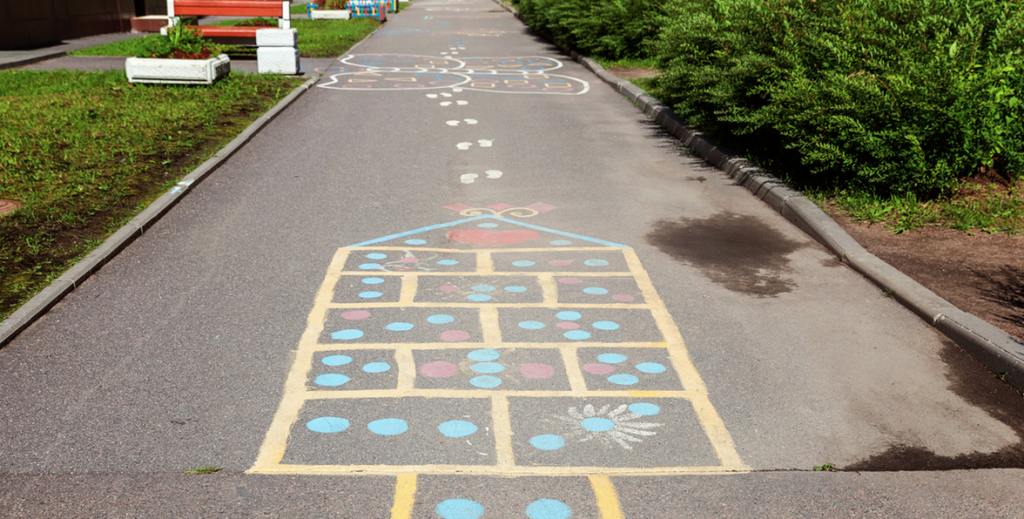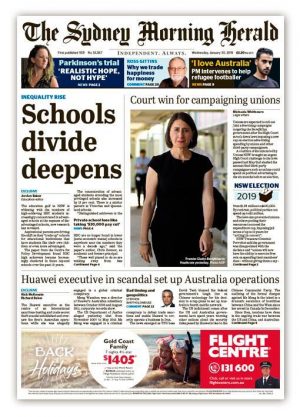In a Class of Their Own series – Part Three

EXECUTIVE SUMMARY
This discussion paper analyses how schools are changing over time, especially in terms of enrolment characteristics and the school achievement measures and results most familiar to parents and teachers. The analysis uses end-of-school measures of student achievement and focusses on New South Wales, Victoria and Queensland, to show the relationship between school achievement and other school characteristics, including level of student advantage and location. Increasingly, we can see high achievers concentrated in the most advantaged schools, while those in lower SES schools are facing falling achievement levels.
The findings are replicated, in different ways, across the three states. In New South Wales in 2017, the proportion of HSC Distinguished Achievers (DAs) from the highest ICSEA schools was 19%, whereas in the lowest ICSEA schools it was 1%. In Victoria, this pattern is repeated, with the proportion of students with a VCE score of 40 or over is 24% in the highest ICSEA band but only 2.2% in the lowest. In Queensland 85% of the highest achievers come from schools above ICSEA 1000, 15% from the schools below.
Even more significantly, such gaps have been widening over the last decade. In NSW, the schools in the  highest ICSEA band have markedly increased their numbers and proportion of DAs since 2005/06. This has been accompanied by a change in the distribution of enrolments to these schools, so that increasingly the most advantaged students are going to the most advantaged schools. In all three states, schools in the highest ICSEA band have increased the proportion of students from the highest SEA quarter, so that that Queensland (+6%), Victoria (+8%) and NSW (+13%) have all seen a concentration of high SEA students into the most advantaged schools.
highest ICSEA band have markedly increased their numbers and proportion of DAs since 2005/06. This has been accompanied by a change in the distribution of enrolments to these schools, so that increasingly the most advantaged students are going to the most advantaged schools. In all three states, schools in the highest ICSEA band have increased the proportion of students from the highest SEA quarter, so that that Queensland (+6%), Victoria (+8%) and NSW (+13%) have all seen a concentration of high SEA students into the most advantaged schools.
At the same time, the reverse is true, with the lowest ICSEA schools in Queensland (+10%), Victoria (+3%) and NSW (+9%) each seeing an increase in the number of students from the lowest SEA quarter. These factors are creating a system that concentrates advantage and disadvantage in different types of schools, with obvious flow on effects for achievement levels of those students. There is also a stark difference between the cities and regional areas, with the proportion of DAs in major cities in NSW at 23%, but only 2.3% in inner regional areas, and just 0.3% in outer regional areas.
The data suggest that achievement outcomes are becoming increasingly connected to the level of advantage of the school a student attends, so that some of the differences in achievement among schools may simply reflect who is enrolled – and how this enrolment is changing – rather than the quality of teaching.
These enrolment trends mean that students who are already advantaged are concentrating in high achieving schools, while the disadvantaged are being segregated into struggling schools, so that the burden of lifting up the most disadvantaged is not evenly spread across schools, sectors and locations.
This paper is part of CPD’s In a Class of Their Own series on disadvantage in Australia’s schools. The series explores different facets of Australia’s contemporary school system and how it segregates and divides students, families and communities. The first paper in this series, A Creeping Indigenous Separation, focussed on disadvantage related to Indigenous students. The second paper, Institutionalised Separation (Jul 2018) by Christina Ho with Chris Bonnor, looked at inequity within selective schools and their impact on other schools.
In a Class of Their Own builds on CPD’s reports on the funding and composition of Australia’s schools. Uneven Playing Field (2016) and Losing the Game (2017) revealed a growing divide between advantaged and disadvantaged students, and richer and poorer schools. Our analysis suggested a less equal and more fragmented Australian schooling system.
Key Documents
 |
 |
 |
|---|---|---|
| Full discussion paper | Executive Summary |
Media release |
Media coverage
‘Winners and losers’: school shopping widens education gap, The Sydney Morning Herald, Jordan Baker, 30 January 2019.
Australia’s school system becoming increasingly segregated, ABC RN AM, Natasha Robinson, 30 January 2019.
The gap between wealthy and disadvantaged schools is widening, research shows, SBS News, Maani Truu,
Key links and related reading
Institutionalised Separation, CPD Discussion Paper 2018, Christina Ho in association with Chris Bonnor.
A Creeping Indigenous Separation, CPD Discussion Paper 2018, Chris Bonnor, Christina Ho and Garry Richards.
Has Gonski stepped outside the square?, Inside Story, Chris Bonnor.
Selective school decisions coming back to haunt us, The Sydney Morning Herald, Christina Ho and Chris Bonnor.
Losing The Game: State of our Schools in 2017, CPD Report 2017, Chris Bonnor and Bernie Shepherd.
Uneven playing field: the state of Australia’s schools, CPD Report 2016, Chris Bonnor and Bernie Shepherd.
Time to seriously review selective schools, The Sydney Morning Herald, Christina Ho and Chris Bonnor.
‘Absolute prize’: Why selective schools are eclipsing private schools, The Sydney Morning Herald, Jordan Baker.
Selective schools must promote equity and inclusion, The Sydney Morning Herald, Editorial.
‘I can see why people are worried’: Have we hit peak selective?, The Sydney Morning Herald, Jordan Baker.



